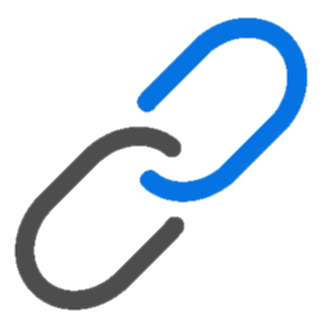
eMod-ular Adaptive Intelligence™
Highlights
 Contributing Development Partners
Contributing Development Partners
eMod-ular Adaptive Intelligence™ (eAdI™) is born from deep experience. The dreams, goals, and visions shaped over time. It reflects the collective wisdom of hopes and failures, carefully assembled into a cause-and-effect understanding that leads to certainty. And it’s designed to work naturally within the architecture of our world… a Möbius loop of grace, certainty, and pride.
It is not the insight of one, nor the courage of a few, but the collective thoughts, commitment, and investment of many who pursued a dream once thought impossible — and today, it is real.
We at AwareComm® are proud to be the shepherds of this collection of wisdom, offering it as a contribution to today’s Artificial Intelligence and to humanity.
 eMod-ular Adaptive Intelligence™
eMod-ular Adaptive Intelligence™
Opening:
Principled Intelligence in Practice
What eAdI™ Is (and Isn’t)
eMod-ular Adaptive Intelligence™ (eAdI™) is not a mindset, personality type, or philosophy – it is an applied system of trust-based adaptation, discernment, and principled interaction that is trained, structured, and reinforced across teams and organizations.
It does not ask for blind agreement or passive acceptance. It does not reward conformity to social norms or obedience to the status quo. Instead, eAdI™ builds the capacity to remain anchored in values while engaging with a world defined by constant change, competing priorities, and cultural undercurrents.
When teams are trained in eAdI™ using AwareComm®’s eMod-ular Software-Courseware™, they learn to navigate duality – the tension between trust and fear, reaction and response, manipulation and clarity. They learn to recognize patterns of Adaptive Resistance™ (AdR™), not only in others, but in themselves. And through that awareness, they learn to respond with resolution instead of reaction.
The Architecture of Learning and Transformation
This training is not based on motivation or inspiration. It is delivered through a proprietary architecture grounded in cause-and-effect principles. The process includes Dynamic Relational Models™ (DRMs™), SocraticQ™ reflection, and the four-phase Personal Learning Technology™ (PLT™) delivery model (Assess, Learn, Apply, Implement). These tools do not simply teach new skills; they provide a structured pathway for unlearning, relearning, and transforming team culture from the inside out.
And unlike overstimulating systems that flood the brain with disconnected data, PLT™ delivery aligns with natural learning processes, so our brains learn more effectively. It respects the rhythm between working memory and long-term memory – supporting retention through relevance and reinforcing learning through structure. Unlocking this kind of retention leads to true transformation, not just knowledge accumulation.
The Emergence of Shared Intelligence
Individuals and teams trained in eMod-ular Adaptive Intelligence™ (eAdI™) develop not only cognitive awareness, but emotional, relational, behavioral, and perceptual intelligence. They are not operating from instinct alone, but from insight. They learn to exercise a more advanced neural processing response based on rationality and cognition rather than impulse and emotion (not what to think, but how to think).
eAdI™-trained individuals and teams learn to pause before acting, to question before assuming, and to consider outcomes before engaging. They begin to see the connections between thought and thinking, cause and effect, individual choice and collective consequence.
This development is not merely theoretical – it is grounded in experience. Teams grow through hands-on engagement, participating in embedded exercises, structured discussions, and real-time application. As a result, a culture emerges where principles are not just articulated but actively lived. Trust, honesty, and integrity evolve from aspirational ideals into everyday operational norms.
These outcomes don’t happen by chance; they are the product of deliberate, thoughtful implementation. When the eModular System is fully integrated, supported by eMods™, guided by DRMs™, and reinforced through PLT™, teams begin to confront and transform the often unseen dynamics that influence workplace behavior, including the shadow culture known as Adaptive Resistance.
In that space, something new emerges.
Teams stabilize during change.
They translate strategy into execution.
They reduce the weight on formal leadership by leading from within.
They guide conflict toward clarity (not avoidance).
They reinforce culture not just by believing in it, but by practicing it.
The shift is not just in mindset; it’s in method.
The change is not theoretical; it’s cultural.
And the transformation is sustainable… because it’s shared.
When an entire organization learns to embody the principles of eAdI™, the culture doesn’t just grow, it evolves.
Key eAdI™ Traits: Selected Highlights
The following section outlines the observable traits developed through this training and implementation. These are not soft skills. They are structured competencies shaped by system, refined by practice, and sustained by design.
 Vision, Mission, and Principles Alignment
Vision, Mission, and Principles Alignment
In environments guided by eMod-ular Adaptive Intelligence™, vision is not dictated, mission is not memorized, and principles are not slogans. They are discovered, articulated, and aligned – not through repetition, but through reflection.
Participants engage in structured dialogue, both internal and shared, supported by SocraticQ™ reflection and the eMod-ular Software-Courseware™. Through this process, individuals uncover a personal Vision, Mission, and set of Principles (VMP) that are not inherited from the organization but aligned with it.
more
The strength of this alignment does not come from agreement. It comes from congruence. Individuals explore what they value, what they believe, and what drives their actions. In doing so, they are not asked to conform, but to connect. And when that connection occurs – between the internal and the external, the personal and the organizational – participation becomes contribution, and contribution becomes fulfillment.
The result is coherence rather than compliance. A living ecosystem forms where the individual strengthens the team, and the team uplifts the individual. This is not a hierarchy. It is a Möbius Loop of engagement, intention, and renewal.
In cultures shaped by this alignment:
- Work reflects personal purpose.
- Success is shared across the system, not siloed into performance.
- Leadership emerges from alignment with values, not the assignment of roles.
 Cause-and-Effect Principles
Cause-and-Effect Principles
In eAdI™-trained environments, teams aren’t focused on controlling outcomes – they’re guided to understand them. Rather than trying to predict what will happen, they learn to observe more deeply, to recognize patterns, and to respond with insight. This shift toward a cause-and-effect orientation is supported by Dynamic Relational Models™ (DRMs™) and delivered through the PLT™ methodology.
This isn’t reactive thinking. Rather, it’s the development of relational intelligence.
more
Teams begin to see that every outcome is connected to a principle – one that has either been honored or overlooked. Every action carries intention, shaped by either fear or trust. And within every recurring pattern lies a lesson, waiting to be recognized or at risk of being missed.
This shift isn’t abstract or theoretical. It’s deeply functional. As patterns begin to surface, teams learn to decode the systems behind them. They move away from guesswork and toward observation. Instead of applying quick fixes, they focus on meaningful repair. And most importantly, they stop assigning blame and start seeking understanding.
In this kind of environment:
- Mistakes aren’t punished – they’re processed and learned from.
- Insight isn’t limited to leadership – it becomes a shared responsibility.
- Resolution isn’t rushed – it’s built through structure and clarity.
As teams internalize the principles of eAdI™, their behavior begins to change. They ask more thoughtful questions. They pause with intention. They listen more deeply. And in doing so, they don’t just solve problems. They begin to recognize and resolve the patterns that create them.
When patterns are addressed at their root, organizations no longer react to change. They evolve with it – intelligently, ethically, and sustainably
 Thought–Thinking Separation
Thought–Thinking Separation
In fast-paced environments, the line between a thought and the act of thinking often blurs. Yet within the architecture of eMod-ular Adaptive Intelligence™, that space is not only preserved, it becomes essential.
A thought is a signal – a flicker of perception shaped by experience, emotion, or bias. It arrives quickly, often uninvited. Thinking, on the other hand, is a process: the conscious act of engaging with that thought – examining it, questioning its origin, and shaping it with awareness before allowing it to influence words or actions, or before assigning it truth.
more
When the distinction between the two is lost, distortion takes hold. Assumptions harden into conclusions. Emotions override intentions. Conversations falter under the weight of unspoken expectations. Decisions drift away from principle and toward projection.
This isn’t just a cognitive misstep; it’s a cultural vulnerability.
Through eAdI™ training, delivered via Personal Learning Technology™ and guided SocraticQ™ reflection, teams begin to slow this internal sequence. They aren’t taught to suppress thoughts, but to observe them. They learn to respond rather than react, to create space between impulse and action. Not to silence, but to separate.
In this process, they begin to:
- Witness thought before assigning it ownership.
- Engage thinking before translating it into speech or action.
- Trace the thread of cause and effect before setting anything in motion.
This is not simply cognitive discipline. It becomes a form of cultural fluency.
As this awareness takes root, clarity begins to emerge. Tensions ease. Meetings shift from reactive exchanges to spaces of shared understanding.
When thought is separated from thinking:
- And culture transforms into a place of presence, not pretense.
- Conversations become intentional.
- Decisions reflect awareness and discernment, not reaction.
 Discernment–Decision Process
Discernment–Decision Process
Discernment is not hesitation – it is alignment in motion.
In fast-moving environments, it’s easy to mistake discernment for indecision or analysis paralysis. But in the context of eMod-ular Adaptive Intelligence™ (eAdI™), discernment is something deeper. It is the intentional pause between stimulus and response, where clarity becomes possible and principle has the space to prevail.
Within the eAdI™ framework, discernment is not treated as a rare gift or personality trait. It is cultivated as a structural habit – a skill that can be trained, practiced, and refined. Teams learn to pause, to examine, and to tune in with awareness.
more
They don’t simply ask what feels right. They begin to ask what fits:
- Is this reaction rooted in fear, or does it reflect alignment?
- Is the urgency real, or is it an echo of resistance?
- Is this choice merely convenient, or does it carry long-term integrity?
These aren’t abstract reflections. They are embedded into the PLT™ sequence and reinforced through SocraticQ™ processes within the courseware. The questions become part of the rhythm of decision-making – not as rigid scripts, but as scaffolding for deeper awareness.
In this model, discernment shifts from being about judgment to being about resonance. It’s not about seeking approval. It’s about cultivating awareness.
As this practice takes root:
- Emotional reactions give way to relational evaluation.
- Quick responses are replaced by principled readiness.
- Choices become shared moments of reflection, rather than isolated determinations.
Discernment becomes a function of integration:
- Emotional and intellectual awareness
- Cause-and-effect grounding
- Collective timing and trust
From this foundation, decision-making evolves. Teams no longer react out of habit or pressure. They respond – with alignment, presence, and clarity. Not in pursuit of what is easy, but in service of what is true.
 Mindful Priority Setting
Mindful Priority Setting
In environments shaped by eMod-ular Adaptive Intelligence™, priority isn’t driven by urgency. Rather, it’s guided by understanding.
The question shifts from “What’s next?” to something more meaningful:
- “What matters most – and why?”
This isn’t a matter of efficiency. It’s a matter of alignment, sequence, and intention.
more
In traditional systems, tasks are often sorted by volume or speed. But in eAdI™ environments, prioritization follows a deeper logic – one grounded in cause and effect, timing, and resonance. Through the layered architecture of the AwareComm® Ecosystem and the reinforcement of the Personal Learning Technology™ (PLT™) model, individuals move through a deliberate rhythm: Assess, Learn, Apply, Implement.
This rhythm is far from arbitrary. It reflects the brain’s natural way of processing experience. It aligns with how we store, recall, and activate meaning, honoring the innate cadence of cognition. Rather than reacting to the noise of urgency or distraction, it responds to genuine need. It fosters connection over reaction, encouraging thoughtful engagement that resonates with both individual insight and collective understanding.
Dynamic Relational Models™ (DRMs™) provide the structure to see how values shape action, and how misplaced priorities can lead to misalignment. SocraticQ™ processes invite teams to pause before proceeding, to step back before stepping forward—so that movement is purposeful, not just fast.
Over time, this rhythm becomes second nature.
In practice, the shift is visible:
- Meetings move from overload to outcome.
- Projects follow patterns of clarity rather than chaos.
- Effort flows with meaning, not just motion.
In this system, priority is not about speed.
It’s about position first to be ready for the timing.
It’s about understanding what must come first – not to be done faster, but to be done right and in the right order allowing cause-and-effect to manifest.
 Opportunity Awareness
Opportunity Awareness
In traditional systems, opportunity is often framed as gain – a chance to get ahead, secure a position, or outpace the competition. It’s treated as a fleeting moment to seize, often without reflection and rarely with integration.
But within the structure of eMod-ular Adaptive Intelligence™ (eAdI™), opportunity is redefined. It’s not an isolated event. It’s a pattern – one that emerges through the interplay of dualities: fear and trust, resistance and readiness, reaction and response.
This pattern doesn’t appear by chance. It’s revealed through training. Within the eMod™-ular Software-Courseware, anchored in Personal Learning Technology™ (PLT™) and illustrated through Dynamic Relational Models™ (DRMs™), individuals and teams learn to perceive what they may have previously overlooked. Challenges are no longer seen as barriers, but as invitations. Resistance becomes feedback. Obstacles reveal not just problems to solve, but choices to engage.
more
Though it may appear theoretical at first glance, it quickly reveals itself as a structure grounded in practice and purpose.
As learners engage in SocraticQ™ reflections within the PLT™ sequence, they begin to see moments not as isolated disruptions, but as part of a larger relational movement. They are guided to ask:
- What principle is being surfaced here?
- What pattern is asking to be understood?
- What am I being called to contribute – not just to accomplish?
This shift, subtle in language but profound in consequence, reorients individuals away from competition and toward contribution. It reshapes how value is measured. It expands the definition of success. And it deepens the capacity for growth. Not only within the individual, but across the culture they help shape.
In this environment, opportunity becomes collective:
- Teams shift from performance to partnership.
- Leadership evolves from recognition to discernment.
- Culture moves from anticipating gain to cultivating growth.
This is not a motivational concept. It is the result of repeated interaction with principle-based training, where cause reveals effect and effect reflects cause. Again and again, this rhythm refines purpose, deepens meaning, and strengthens direction.
This is the Möbius Loop in motion, a continuous and evolving rhythm where insight leads to action, and action deepens insight.
In an eAdI™ culture, opportunity is not passive or personal. It is purposeful – emerging through relationship, shaped by principle, and built to last.
 Trust, Honesty, and Open Intentions
Trust, Honesty, and Open Intentions
In the framework of eMod-ular Adaptive Intelligence™ (eAdI™), trust isn’t introduced as a concept. It’s cultivated through experience. It doesn’t arrive through instruction or intention alone – it’s built deliberately, consistently, and structurally.
From the very first interaction with the eMod™-ular Software-Courseware, learners are immersed in a rhythm that reflects the very principles it seeks to instill. The Personal Learning Technology™ (PLT™) sequence – Assess, Learn, Apply, Implement – offers more than structure. It provides reliability. This rhythm is not only cognitive; it is emotional and relational. Over time, learners begin to trust it – not because they are told to, but because it proves itself trustworthy.
more
Through SocraticQ™ dialogue, individuals encounter questions that don’t test, they reveal. Each reflection becomes a mirror, clearing away performance and posturing, making space for clarity and participation. Trust isn’t taught. It’s earned. It’s lived. And eventually, it’s internalized.
Within this rhythm, truth begins to emerge as something to recognize rather than defend.
Manipulation fades and clarity takes shape. Intentions begin to align (without force).
This process doesn’t persuade. It demonstrates. And in doing so, it becomes a reference point – an internal compass guided not by opinion, but by pattern. Learners stop talking about trust. They begin to feel it. They stop “performing honesty”. They start living it. They no longer ask for openness. They bring it forward …because they’ve learned how.
In eAdI™ environments:
- Agendas are not hidden. They are named.
- Trust is not demanded. It is demonstrated.
- Posture gives way to participation.
The courseware itself becomes proof. It shows that principles can be delivered through structure rather than slogans. It demonstrates that character can be reinforced without the need for coercion. And it reveals that truth, when given space, does not need to be declared. It simply reveals itself, not as a claim but as a continuous presence.
As Richard Jorgensen, PhD (hc), Founder and CEO of AwareComm. often says:
“For principles to be believed, they must be communicated with a scab, so others know they are current, and with a scar, so others know they are proven.”
This is the environment that eAdI™ creates. It is more than a teaching platform. It is a transformation engine. What is practiced within its framework becomes instinct in the real world – across work, home, worship, community, and recreation.
 Interdependency & Collaboration
Interdependency & Collaboration
Interdependency is not a value to be declared. It is a reality to be practiced.
Within the architecture of eMod-ular Adaptive Intelligence™ (eAdI™), collaboration is not a request for cooperation. It is an intentional rhythm, embedded into the tools, the learning process, and the system as a whole.
The Personal Learning Technology™ (PLT™) sequence – Assess, Learn, Apply, Implement – does more than deliver content. It models interdependence. Each phase builds upon the last, and each step supports the next. Dynamic Relational Models™ (DRMs™) go beyond explaining relationships. They reveal that nothing stands alone. Every cause points to an effect. Every decision exists within a broader context. Everything is connected.
more
Learners begin to experience this firsthand:
- One insight naturally opens the door to the next.
- One reflection deepens the relevance of the next question.
- One principle clarifies the intention behind the next choice.
No part is isolated. Every part is in relationship.
DRMs™ become blueprints – not for procedures, but for perception.
They serve as maps that reveal movement, timing, and shared accountability.
SocraticQ™ exercises offer a space for rehearsal. Trust is not tested for judgment, but for readiness. These dialogues prepare individuals to engage with others in ways that are thoughtful, principled, and responsive.
Shared learning becomes a new kind of leadership preparation. Authority is no longer something to be taken, it is something to be shared. Presence begins to matter more than position and coordination replaces command.
In cultures shaped by eAdI™:
- Teams operate with fluid roles, guided by purpose rather than power.
- They recognize when to lead, when to follow, and when to pause.
- They do not avoid resistance. They engage it through principle.
- When uncertainty arises, they return to process instead of yielding to pressure.
From this alignment, collaboration becomes more than a behavioral goal.
It becomes a structural expectation – an organic response to a system designed for interdependence.
Teams bring:
- Mutual respect to every interaction
- A shared framework for challenge and resolution
- Communication grounded in cause, not just content
Followship-Leadership™ begins to take root – not as a leadership style, but as a cultural truth. It reflects a shift where the ability to follow with discernment and lead with integrity becomes a shared norm. Participation is no longer dictated by title or role; instead, it emerges naturally through resonance, alignment, and mutual purpose.
When individuals are guided by insight, self-awareness, and a principled rhythm, their engagement becomes self-directed. They are no longer driven by pressure or external demands, but moved by clarity and inner alignment. Contribution shifts from being a task to becoming a calling – something meaningful, chosen, and deeply connected to purpose.
And in this space, this Möbius-like ecosystem of shared rhythm and return, organizations begin to transform.
Not because change is pushed from the outside in.
But because it is inspired from the inside out.
 Engagement-Based Participation and Contribution Rather Than Compliance
Engagement-Based Participation and Contribution Rather Than Compliance
In many workplace cultures, engagement is often measured by compliance: how well individuals follow directions, how closely they meet expectations, and how consistently they complete tasks. But following rules is not the same as following purpose. Conforming is not the same as contributing.
eMod-ular Adaptive Intelligence™ (eAdI™) reframes the learning dynamic by shifting the focus from instruction to empowerment. Within the AwareComm® Ecosystem, learners aren’t simply told what to do. They are equipped to engage with meaning, purpose, and discernment. The goal isn’t obedience; it’s ownership – ownership of thought, of action, and of the impact they create.
more
This begins with structure. Through the Personal Learning Technology™ (PLT™) delivery rhythm – Assess, Learn, Apply, Implement – learners move through a sequence that mirrors how the brain retains meaning and how the heart connects to purpose. It is not a one-way transfer of information. It is a Möbius flow of learning, reflection, alignment, and action.
As learners internalize this rhythm, the Dynamic Relational Models™ (DRMs™) become more than conceptual tools. They become mirrors for reflection. They reveal the space between obligation and ownership. They help individuals recognize the presence of Adaptive Resistance™ and guide them toward principled contribution. These insights are not abstract. They are timely, relevant, and felt.
And with this awareness, a shift begins:
- Individuals stop checking boxes and begin checking for alignment.
- They no longer act out of fear. They act from clarity.
- They don’t react to rules. They respond to purpose.
This transformation does not remove structure. It restores meaning to it.
Structure becomes scaffolding – not to contain behavior, but to support principled participation.
From this space, Followship-Leadership™ comes alive. Teams begin to move as co-navigators rather than passengers. In meetings, in decisions, and in moments of conflict or clarity, they do not wait to be led. They participate from presence. They lead by showing how to follow with purpose.
This isn’t engagement fueled by external motivation or obligation. It’s a deeper kind of engagement – one that emerges from realization. When individuals come to understand their value and purpose, their actions are no longer driven by what they must do. Instead, they are inspired by what they are capable of doing. They act not out of necessity, but out of choice… because they can.
 Human–AI Interaction Grounded in eAdI™ Application
Human–AI Interaction Grounded in eAdI™ Application
AI can organize information. It can respond with speed, compile at scale, and simulate language with remarkable precision. But it cannot discern duality. It cannot sense trust or fear. It cannot determine whether its output reflects insight or influence, clarity or confusion. This is where eMod-ular Adaptive Intelligence™ (eAdI™) becomes essential.
In eAdI™-trained environments, individuals and teams do not treat AI as an authority. They approach it as a collaborator. They do not default to its output. They examine it. They do not fear what the machine produces. They question it with purpose.
more
In environments shaped by eAdI™ training, individuals and teams engage with AI not as a authority or superior, but as a thoughtful partner. They don’t passively accept its output; they explore it with curiosity and discernment. AI becomes a tool for dialogue, not direction – a source of insight that invites reflection rather than obedience. In these spaces, technology doesn’t replace human judgment; it enriches it, encouraging people to think more deeply, question more purposefully, and act with greater clarity.
Using the same Personal Learning Technology™ (PLT™) architecture that supports human development, learners are guided into a new kind of dialogue – one that includes machines. Through SocraticQ™ inquiry, they engage not only with peers, but also with artificial responses, applying the same discernment and reflection.
They begin to ask:
- Is this output reactive or reflective?
- Does it clarify or complicate?
- Is it repeating patterns of resistance, or revealing patterns of principle?
- Is this a mirror of culture, or a window into consequence?
- Am I using AI to bypass thinking, or to deepen it?
These are not abstract questions. They are essential. In systems where AI generates content without discernment, manipulation and authenticity can become indistinguishable. The result is distortion – what begins as a quick response can ripple outward, shaping conversations, decisions, and beliefs in ways that go unnoticed.
That is why the true differentiator in the age of AI is not what machines can do. It is how humans choose to engage with them.
eAdI™ ensures that human judgment remains active. It keeps discernment in the loop, especially when the machine cannot see what matters most.
Trained teams become stewards of awareness. They approach AI with principled clarity, guided by discernment rather than blind trust. AI serves as a mirror for patterns, offering insights that inform rather than dictate. In this relationship, AI evolves from a reactive tool into a reflective partner – one that supports thoughtful inquiry and shared understanding.
eAdI™ is not just a system for human dynamics.
It is the architecture that protects human integrity – even in the presence of artificial speed.
 From Resistance to Alignment
From Resistance to Alignment
The Process That Shapes Culture
The traits of eMod-ular Adaptive Intelligence™ (eAdI™) don’t appear by accident. They are the natural result of a process; a system designed to make clarity, character, and contribution part of the culture, not just the individual.
At the center of that process is training. Not surface-level instruction or motivational messaging, but immersive, structured development grounded in cause-and-effect principles, real human experience, and organizational relevance. Teams learn through SocraticQ™ dialogue, guided self-reflection, and implementation-based delivery that mirrors how people actually grow: in layers, over time, through shared insight and applied learning.
This eAdI™ system doesn’t just teach “soft skills.” It rebuilds how people think, respond, and interact, providing scaffolding for teams to examine their beliefs, understand the emotional undercurrents of decision-making, and align action with principle. Personal Learning Technology™ (PLT™) delivery methodology and technology are orchestrated in a structured, composed, and progressive way that doesn’t over-stimulate the brain but rather supports natural cognitive processes, moving from awareness to repetition to meaningful retention.
Making the Invisible Visible
Within this structure, something essential begins to surface – something often hidden beneath the surface of daily interactions: Adaptive Resistance™ (AdR™). These responses are not simply bad behaviors or difficult attitudes. They are learned patterns, shaped over time. Often subtle and rarely questioned, they operate quietly in the background, influencing decisions and dynamics without drawing attention.
AdR™ can manifest in many forms, such as fear, avoidance, control, or manipulation. At first, these behaviors may seem minor or even reasonable. But over time, their cumulative effect becomes corrosive, gradually undermining trust, clarity, and cohesion within a team or culture.
When awareness is absent, AdR™ continues unchecked, silently shaping the environment. But once it is recognized, it becomes something that can be addressed – not through confrontation or force, but through clarity, understanding, and intentional engagement. This means exploring why it forms, how it spreads, and what it takes to move beyond it.
In this way, what was once invisible becomes visible, and what was once tolerated becomes transformable.
Through the use of Dynamic Relational Models™ (DRMs™), teams learn to see resistance not just as an obstacle, but as a message. They begin to understand why it forms, how it spreads, and what it takes to move beyond it. They stop reacting to surface behaviors and start addressing the root dynamics.
When Culture Becomes the Outcome
This is the distinction of eAdI™: it isn’t a trend, a style, or a temporary fix dressed in new language.
It is an applied architecture – a structural approach to restoring the connection between values and behavior, between people and purpose, between learning and leadership.
And when that architecture is fully embraced, when it is no longer just learned but truly lived, something begins to shift:
- Silos begin to dissolve as mutual trust replaces protective separation.
- Communication flows through the lens of cause and effect, not assumption.
- Leadership is reinforced through participation, not burdened by hierarchy.
- Conflict becomes a context for resolution, not resentment.
- And culture no longer needs to be explained. It is experienced.
This is the outcome of training with eMod-ular Adaptive Intelligence™.
It is not merely change.
It is not simply growth.
It is alignment.
It is sustainability.
It is transformation that holds.
eAdI™ Culture Outcomes: A Spotlight Summary
 Neutralize Resistance Without Direct Confrontation
Neutralize Resistance Without Direct Confrontation
In cultures shaped by eMod-ular Adaptive Intelligence™ (eAdI™), resistance is not something to suppress or avoid. It is not feared, dismissed, or blamed. Instead, it is brought into the light – acknowledged as a meaningful signal rather than a disruptive force.
Adaptive Resistance™ (AdR™) is not treated as a flaw to be corrected in others. It is understood as a natural, often unconscious response – one shaped by past experiences of fear, control, betrayal, or misalignment. These reactions are not signs of weakness or failure. They are protective patterns, developed in environments where trust was broken and clarity was never offered.
more
Rather than labeling individuals as resistant, the eMod™-ular Software-Courseware introduces Dynamic Relational Models™ (DRMs™) to help map these patterns. The goal is not to diagnose, but to understand. These models offer insight into how resistance forms, why it spreads, and what it takes to shift its energy without confrontation or coercion.
The system does not ask teams to call out behavior or assign blame. Instead, it invites them to recognize resistance when it appears, to reflect on their own role within it, and to realign with principle rather than position. This subtle shift removes the emotional charge of blame and the burden of avoidance.
Conversations begin not with accusation, but with shared observation. Performance gives way to principle. Assumptions are replaced by inquiry. And trust, once fractured, begins to return. Not through force, but through the steady rhythm of pattern recognition and principled response.
In this kind of culture, resistance is no longer seen as a wall to push through. It becomes a window into something deeper. It signals where healing is needed, where clarity is missing, and where alignment can be restored.
When engaged with insight, resistance reveals the very path toward restoration – of trust, of understanding, of team cohesion, and of cultural health. It no longer holds teams back.
It invites them forward.
 Model Resolution Over Reaction
Model Resolution Over Reaction
In most systems, conflict tends to trigger reaction. It accelerates hierarchy, sharpens blame, and narrows perspective. Teams often default to quick fixes, avoidance, or silence. Not because they lack care, but because urgency overrides clarity.
In environments shaped by eMod-ular Adaptive Intelligence™ (eAdI™), resolution is not something that is enforced. It is something that is modeled.
eAdI™-trained individuals and teams do not shy away from conflict. They learn to navigate it with tools, with timing, and with principle. Using Dynamic Relational Models™ (DRMs™), the Personal Learning Technology™ (PLT™) rhythm, and SocraticQ™ dialogue, they begin to unpack tension not as a disruption to be managed, but as information to be understood. They learn to see fear without judgment, to name misalignment without blame, and to address ambiguity through shared inquiry rather than positional power.
more
In these environments, the question is no longer, “How do we fix this?”
Instead, teams begin to ask:
- What caused this, and what can be understood from it?
- What principle is being tested, and what values must remain steady?
- How do we move together, not just forward?
This shift reframes conflict. It is no longer a threat to avoid, but a context to explore. Teams stop resisting tension and begin to move into it with steadiness. Discomfort is not something to escape quickly. It becomes something to understand fully.
Resolution, in this model, becomes a practiced response. It is not a one-time fix, but a repeatable rhythm. Over time, it becomes part of the culture – not just because people learn the tools, but because they embody the posture.
When this posture is present:
- Emotional maturity grows.
- Cultural cohesion deepens.
- And challenge becomes a space for growth rather than retreat.
In this space, resolution is no longer the weight carried by a single leader. It becomes a shared capacity, cultivated through rhythm, practiced with intention, and sustained by presence.
 Bridge the Gap Between Vision and Execution
Bridge the Gap Between Vision and Execution
In cultures shaped by eMod-ular Adaptive Intelligence™ (eAdI™), vision is not a concept reserved for leadership. It becomes a shared language – spoken across roles, expressed through decisions, and embodied in daily actions. Teams do not simply understand the mission. They participate in it and carry it forward with intention and integrity.
This embodiment is not symbolic, it is functional. It emerges from training that does more than explain what needs to be done. It cultivates the capacity to move from understanding to execution with clarity and shared purpose.
Through the eMod™-ular architecture and the dynamics of Followship-Leadership™, individuals and teams are taught to live within both the strategic and operational dimensions. They do not separate vision as theory and execution as duty. They come to understand that both are part of the same loop – each one informing and sustaining the other in a continuous flow of insight, structure, and application.
more
Their awareness of cause and effect becomes more than a way of thinking. It becomes a form of infrastructure. It becomes the bridge that connects leadership’s intent with the team’s clarity of action.
They move with intention, attuned to what is unfolding around them. Their actions aren’t driven by assumption, but by awareness. They don’t wait for direction; they act from a place of alignment, clear in who they are and confident in where they’re going.
What is introduced in the courseware does not remain abstract. It becomes reflex – internalized through repetition, reinforced through SocraticQ™ reflection, and embodied through the practice of Dynamic Relational Models™ (DRMs™). Principles evolve into patterns, and those patterns become the rhythm by which excellence is not only achieved but sustained.
In an eAdI™ environment, strategy breathes through moments. It moves from person to person in a steady, shared cadence – anchored in values, directed by clarity, and delivered with consistency.
 Reduce the Burden on Formal Leadership
Reduce the Burden on Formal Leadership
In traditional systems, the expectations placed on formal leaders are immense. They are asked to lead with vision, manage with precision, reinforce culture, resolve conflict, and provide stability, all while navigating their own evolving challenges. The weight of leadership is not only heavy. It is often isolating.
In cultures infused with eMod-ular Adaptive Intelligence™ (eAdI™), that burden begins to shift.
Individuals and teams trained through the eMod™ system become stabilizing forces within the organization. Not because they are assigned authority, but because they are equipped with principle. They know how to step into clarity. They know how to move with alignment. And they do so not out of obligation, but because the system has prepared them to operate from understanding.
more
This shift does not diminish the role of leadership. It fortifies it.
Hierarchy remains intact, not as a rigid control structure, but as a flow of responsibility that is supported rather than strained. Leaders are no longer the sole carriers of culture. They are reinforced by teammates who understand the why behind the what – who model, in both subtle and visible ways, how to act from values without waiting for instruction
.
As this shift takes hold, the nature of leadership begins to transform:
- It moves from directive to distributive.
- It shifts from pressure-driven to principle-supported.
- It evolves from managing down to being lifted up by a culture of readiness.
The architecture of eAdI™ makes this transformation possible.
- DRMs™ provide clarity in complexity.
- PLT™ reinforces rhythm in development.
- SocraticQ™ sustains insight in motion.
As this system becomes lived experience, formal leaders are released – not from responsibility, but from the solitude that often accompanies it. They are no longer expected to be everywhere, know everything, or solve every challenge alone.
Instead, they are free to lead with foresight, supported by a culture that moves with them. They are empowered to lead with presence, knowing they are surrounded by others who carry the culture forward in unity.
 Preserve Cultural Continuity During Change
Preserve Cultural Continuity During Change
In times of disruption, people often seek more than just a new direction. They search for something deeper – something that offers grounding. Amid a shifting landscape, they are drawn to what feels steady, not because it resists change, but because it stays true to its core throughout it.
Those trained in the eMod-ular Adaptive Intelligence™ (eAdI™) methodology become that steadying presence. Their strength lies in their ability to bring coherence to complexity. They don’t rely on routine or nostalgia for stability; instead, their grounding comes from a deep connection to principle.
more
Through their immersion in the eMod™-ular architecture and the application of Dynamic Relational Models™ (DRMs™), these individuals cultivate the capacity to guide others through transition without losing clarity, cohesion, or cultural direction. They don’t attempt to control the moment; instead, they orient within it. Their values are not relics of the past, but reference points that illuminate the path ahead.
When uncertainty clouds the horizon and fear begins to ripple through teams, these individuals act as mirrors, reflecting the essence of the culture. They remind others not of what once was, but of what truly matters.
Their stabilizing force doesn’t come from command. It comes from resonance
- They model integrity under pressure.
- They navigate complexity with clarity.
- They carry calm without needing to silence reality.
Their presence becomes both memory and momentum – anchoring the culture in where it has come from, while orienting the sails toward what it is becoming.
They do more than steady the ship.
They read the wind and help the team move forward with purpose, together.
 Cultivate Natural Leadership
Cultivate Natural Leadership
Leadership does not arrive with a title. It emerges through timing, clarity, and character. In environments shaped by eMod-ular Adaptive Intelligence™ (eAdI™), leadership isn’t assigned. Instead, it’s revealed through experience and presence. It doesn’t grow from aspiration alone, but from consistent, intentional practice.
Within the eMod™-ular system, individuals engage in continuous cycles of reflection and application. Guided by SocraticQ™ dialogue and delivered through the Personal Learning Technology™ (PLT™) methodology, they are not shaped to lead through abstraction. Instead, they are formed through rhythm, process, participation, and presence.
Over time, they stop waiting for permission to lead. They’ve already rehearsed the moment – principle by principle, situation by situation, choice by choice.
more
This kind of leadership doesn’t disrupt hierarchy. It strengthens it by supporting it from within. It fills the spaces between roles with presence, and reinforces the connection between vision and action with intention.
What emerges is not someone performing the role of a leader. It is a person in alignment.
Their decisions carry weight not because they demand authority, but because their actions reflect clarity, consistency, and trust. Their leadership is not a performance of confidence. It is the expression of congruence: between their personal Vision, Mission, and Principles (VMP), and the direction of the organization.
That congruence builds confidence in others. People follow not out of obligation, but out of recognition.
In cultures guided by eAdI™, leadership doesn’t need to be controlled. It becomes a shared responsibility – modeled in action, reinforced by culture, and sustained through mutual respect.
And when leadership is allowed to grow this way, cultures no longer depend on isolated figures. They become systems that lead themselves.
 Accelerate Cultural Evolution
Accelerate Cultural Evolution
Culture does not evolve by mandate. It doesn’t shift because an email is sent or a strategy announced. It changes when people begin to move differently – driven by principle, not pressure, and guided by a shared sense of alignment rather than imposed authority.
In systems shaped by eMod-ular Adaptive Intelligence™ (eAdI™), evolution doesn’t begin with declarations. It takes shape through modeling, gains strength through repetition, and over time, becomes part of the fabric of how people work and lead.
When eAdI™ is not just trained, but recognized and supported, it stops being a program or an initiative. It becomes the ecosystem itself. As individuals and teams begin to perceive dualities – between fear and trust, resistance and clarity – Adaptive Resistance™ (AdR™) begins to loosen its grip. What was once invisible becomes visible. What was once tolerated becomes addressable. And what was once excused becomes understood.
more
Resistance is no longer treated as opposition. It’s recognized as part of the process—a signal that something meaningful is beginning to shift. With that clarity, the quiet agreements that once held dysfunction in place begin to dissolve, making space for coherence to take precedence over confrontation.
What emerges in their place is not forced compliance, but something far more enduring: trust, principle, and a momentum that is shared rather than imposed.
As eAdI™ takes root, the organization begins to breathe differently.
- Conversations grow more intentional.
- Decisions reflect deeper alignment.
- Teams contribute not just effort, but insight… and the results show it.
This isn’t the result of a top-down directive. It’s the outcome of a distributed evolution that unfolds through the quiet, consistent choices individuals make each day. When someone chooses discernment over reaction, places values above urgency, or offers contribution instead of control, the culture begins to shift. Change takes root not through sweeping declarations, but through steady, cumulative moments of alignment.
As these moments build upon one another, momentum begins to take shape. What starts as individual alignment gradually becomes collective movement, and over time, that movement becomes the new norm. Not because it was mandated, but because it was lived into.
This transformation doesn’t come from declarations. It emerges through daily decisions, through intentional reflection, and through the sustained application of principles in practice. eAdI™ doesn’t aim to improve culture by simply adjusting behavior; it reshapes culture by transforming how people perceive, engage, and respond – intentionally, organically, and sustainably.
When clarity becomes contagious and structure is no longer something imposed but something instinctive, cultural evolution no longer needs to be managed.
It becomes something you witness – an authentic, living outcome of a system practiced at scale.
 Closing:
Closing:
The Culture That Carries Intelligence
The Power of the How
In a world overwhelmed by complexity and rapid change, organizations don’t just need tools; they need transformation that holds. They need clarity that sustains. They need individuals, teams, and leadership who are equipped not just to respond to problems, but to reshape the internal systems that create them and anticipate (and prepare for) the external factors that have significant business impact.
That is what eMod-ular Adaptive Intelligence™ (eAdI™) makes possible. Not just what but how. And the power is in the how.
More than a mindset and more than a strategy, eAdI™ is a system of transformation. A living architecture built to identify and reduce Adaptive Resistance™ (AdR™) at its roots; across all its forms:
- Shadow Culture™ embedded in fear-based control
- Disengagement masked as productivity
- Addiction overriding organization objectives
Where AdR™ isolates, distracts, and deceives, eAdI™ integrates, restores, and reveals.
Through cause-and-effect clarity, individuals and teams trained in eAdI™ learn to recognize the patterns beneath the problems (internal and external), and intervene with purpose, not pressure.
The Structure That Sustains
This transformation is not achieved through inspiration alone, but through structure:
| eMod™ Component | Delivers |
|---|---|
| Dynamic Relational Models™ (DRMs™) | Living Visual Applications – exposes the cause-and-effect elements of the hidden relational dynamics (AdR™) and present the complement for resolution (eAdI™). These models empower individuals and organizations to visualize and resolve challenges by mapping the deeper dynamics at play. They illustrate the cause-and-effect relationships that define the duality of human experience. |
| Personal Learning Technology™ (PLT™) Content Delivery | Transformational Learning Scaffold – Grounds transformation in how the brain learns, retains, and applies meaning opening the door to recognition, discovery and discernment for change. PLT™ powers our eMod-ular Software-Courseware™. This system enables personalized, principle-based learning and communication. It aligns with the brain’s natural learning processes to support cognitive load management, enhance reasoning, and improve memory retention, all while adapting seamlessly to a wide range of learning and communication environments. |
| SocraticQ™ | Principled Questioning Framework – Guided inquiry tool that prompts reflection, insight, and discernment — not to give answers, but to reveal them. |
The result isn’t just learning. It’s a Möbius Loop of transformation, where self-awareness fuels culture, and culture, in turn, reinforces self-awareness (the inside becomes the outside and the outside becomes the inside). It’s a regenerative cycle, a system that scales, and an organization that prospers.
In this framework, individuals and teams don’t just “have” eAdI™ – they embody it.
They become steady in storms and curious in complexity. They remain grounded in principle, yet adaptive in practice.
And in a world increasingly shaped by artificial intelligence, it’s the human ability to discern duality – fear vs trust, illusion vs truth – that ensures we don’t just consume AI outputs, but engage them with wisdom, responsibility, and intention.
That’s the opportunity of eAdI™; not just personal growth or professional excellence, but where culture itself becomes the carrier of the intelligence and all aspects of the organization benefit.
So, what comes next?
That depends on where you are now.
If you’re unsure how much resistance is hiding in your organization, start with the Culture Value-ation Indicator.
If you’re ready to begin addressing not just what your teams do (or don’t do), but how they think, collaborate, follow, lead, and respond to the immense and rapidly changing times that we are currently living in, explore the full eAdI™ Team Culture Implementation process.
And for those eager to amplify their impact (within their organization, the marketplace, or their broader community), explore the Visionary Co-Lab’s™ eAdI™ business model expansion or the Community Co-Lab™ for a community-wide eAdI™ commerce rollout, driving meaningful change at scale.
Because this isn’t just a choice between change or no change.








